For nearly six decades, Transportes Aéreos Militares Ecuatorianos (TAME) stood as a unique pillar of Ecuador’s aviation sector. Unlike traditional civilian airlines, TAME was born from and remained under the auspices of the Ecuadorian Air Force (Fuerza Aérea Ecuatoriana – FAE), representing a distinctive model of military aviation serving civilian needs. This dual identity allowed TAME to play a crucial role in national integration, connecting the diverse landscapes of Ecuador from the Andean highlands to the Pacific coast, and from the Amazon rainforest to the Galápagos Islands. As a military entity operating in the civilian sphere, TAME embodied Ecuador’s innovative approach to leveraging defense resources for public service and national development.
Origins: A Military Vision Takes Flight
On December 4, 1962, TAME was born from the visionary proposal of Colonel Luis Ortega of the Ecuadorian Air Force. Ortega’s comprehensive plan for an airline included detailed organizational, financial, and administrative schemes. With the crucial backing of FAE Commander General Guillermo Freire, Ortega’s dream rapidly transformed into reality.
The fledgling airline’s operations began at the Mariscal Sucre Air Base in Quito, home to the FAE’s 11th Transport Wing. Just thirteen days after its official creation, on December 17, 1962, TAME’s inaugural flight took to the skies, marking the beginning of an era that would reshape Ecuador’s transportation landscape.
Early Fleet: The Douglas Era
TAME’s journey began with a fleet of Douglas C-47s, aircraft that epitomized versatility in both military and civilian roles. These rugged workhorses, already proven in FAE service, seamlessly transitioned to TAME’s operations while retaining their military status. The C-47 fleet expanded through various means – some came via U.S. military aid programs, others were acquired from civilian markets, and several were reassigned from other FAE duties. By December 1963, TAME’s operations were supported by ten C-47s, with nine actively flying.
The C-47s’ service with TAME was marked by both triumphs and challenges. On September 6, 1969, two TAME C-47s (FAE-4341 and FAE-1969) were hijacked in a coordinated terrorist operation. The aircraft, commandeered under the name “Operación Ho-Chi-Minh,” were forced to fly to Cuba via Panama and Jamaica. This event highlighted the unique risks faced by a military-operated airline serving civilian routes.
Tragedy struck on September 12, 1971, when FAE-20179 (also known as CA-179) crashed into a mountain near Celica, Pichincha. The aircraft, under the command of Mayor César Alfredo Egas Mena, was carrying four passengers when it met its fate, underscoring the challenges of operating in Ecuador’s diverse and often unforgiving terrain.
Despite these incidents, the C-47s remained the backbone of TAME’s early operations. Their ability to operate from short, unprepared airstrips made them invaluable for serving remote communities across Ecuador’s varied landscape.
As TAME’s ambitions grew, so did its need for aircraft with greater range and capacity. Between 1963 and 1975, the airline strategically acquired seven Douglas DC-6Bs, marking a significant leap forward in its operational capabilities. These four-engined propliners, with their pressurized cabins and impressive 4,000-mile range, were game-changers for TAME. Some of these DC-6Bs were former United Airlines aircraft, bringing a touch of international aviation history to Ecuador’s skies.
The DC-6Bs played a pivotal role in establishing and maintaining routes to the Galápagos Islands, a challenging 600-mile overwater flight from mainland Ecuador. This new service not only boosted the nation’s tourism industry but also strengthened connections with the ecologically crucial archipelago. With a capacity of up to 102 passengers and a cruise speed of 315 mph, these aircraft significantly enhanced TAME’s ability to meet growing demand on popular routes.
Modernization Begins: The Turboprop Era
The dawn of the 1970s ushered in a new phase for TAME, marked by the introduction of more modern turboprop aircraft. In 1970, TAME began integrating Hawker Siddeley 748 aircraft, also known as Avros, into its fleet. These British-made turboprops represented a significant technological leap forward. With their pressurized cabins and improved speed, the Avros allowed TAME to offer a more comfortable and efficient service. Over the next few years, TAME would acquire a total of five Avros, gradually phasing out the aging C-47s.
The modernization drive continued between 1974 and 1975 when TAME acquired six Lockheed L-188 Electra aircraft. These four-engine turboprops played a crucial role in expanding TAME’s domestic and international services. The Electras were particularly well-suited to serving Ecuador’s coastal routes and the increasingly popular Galápagos destinations. Their long range and high speed made them ideal for connecting Ecuador’s main cities with the islands, further cementing TAME’s role in the country’s growing tourism sector.
The Electras served TAME well for over a decade, but their service was not without incident. On September 12, 1988, one of the Electras suffered engine failure during takeoff at Lago Agrio airport, resulting in a tragic crash that claimed the lives of all crew members. In another incident, an Electra made an emergency gear-up landing at Taura air base due to landing gear problems, fortunately without casualties.
In 1975, TAME introduced three De Havilland Canada DHC-6 Twin Otter aircraft to address the unique challenges of operating in the country’s eastern areas, particularly the Amazon basin. Renowned for their Short Take-Off and Landing (STOL) capabilities, these versatile planes could operate from short, unpaved airstrips, making them ideal for the rugged terrain. The Twin Otters enabled TAME to establish air links with remote communities previously isolated from the nation’s air network.
The Jet age: Boeing and Beyond
TAME’s entry into the jet age began in 1981 with the introduction of the Boeing 737-200, affectionately dubbed “Ciudad de Loja” in honor of the southern Ecuadorian city. The 737 quickly became a workhorse of TAME’s fleet, serving both domestic and short-haul international routes.
Between 1984 and 1985, the airline introduced the Boeing 727-100 to its fleet, significantly enhancing its medium-haul capabilities and passenger capacity. Building on this success, TAME further upgraded its fleet from 1991 to 1999 with the acquisition of Boeing 727-230 models. These advanced variants offered notable improvements in fuel efficiency and range over their predecessors.
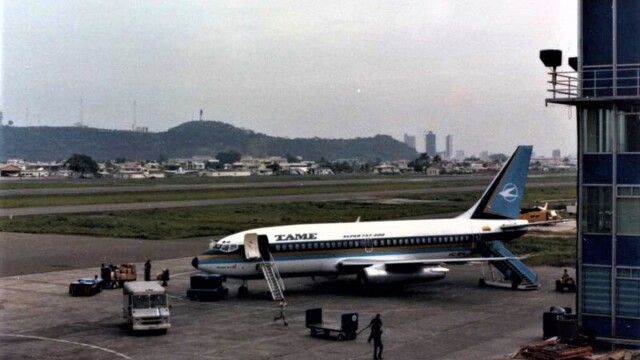
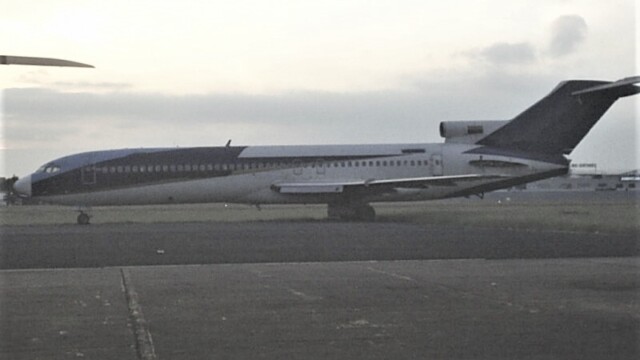
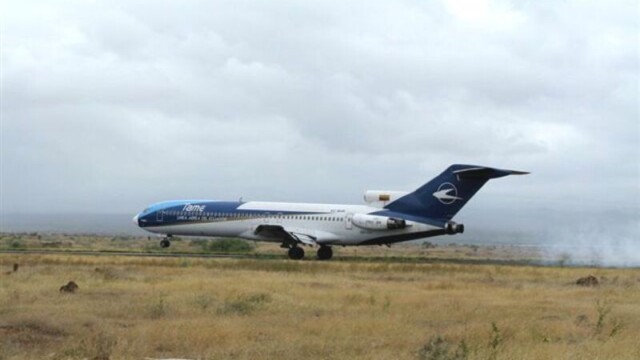
In the early 2000s, TAME briefly operated a Boeing 757-200 (Mexican registration XA-RLM) to address urgent capacity needs on specific routes. While not intended as a long-term addition to the fleet, the 757’s temporary deployment demonstrated TAME’s agility in adapting to sudden market changes.
The Dutch Connection: Fokker F-28
To serve routes with lower demand, TAME incorporated two Fokker F-28 Fellowship aircraft into its fleet in 1985. These compact jets proved valuable for regional operations, particularly on the Quito-Tulcán-Cali corridor. Despite a setback in January 2003 when one F-28 was damaged beyond repair in an accident at Quito’s Mariscal Sucre Airport, TAME promptly replaced the lost plane, maintaining the fleet’s capacity and operational flexibility until their retirement in 2009.
Into the New Millennium: A European Flavor
As TAME entered the 21st century, it began leasing Airbus A319 and A320 aircraft. These modern, fuel-efficient jets represented a major step forward in terms of passenger comfort and operational efficiency. Over the next few years, TAME would gradually increase its Airbus fleet, eventually operating up to 12 of these types.
In 2013, TAME leased an Airbus A330, its first wide-body aircraft, aimed at serving long-haul routes, particularly to the United States. This move reflected TAME’s ambition to compete in the international market.
Brazilian Engineering: The Embraer Era
From 2006, TAME began incorporating aircraft from Brazilian manufacturer Embraer, adding two ERJ170 and five ERJ190 aircraft. These modern jets provided a perfect middle ground between TAME’s smaller aircraft and its larger Boeing and Airbus fleet, enhancing the airline’s network flexibility and operational economics.
In a related development, TAME partnered with SAEREO, a small Ecuadorian carrier, to operate TAME Express services using an EMB120 Brasilia turboprop. This arrangement allowed TAME to serve smaller markets and maintain connections to communities that couldn’t support larger jet service.
The introduction of these Embraer jets further enhanced TAME’s network flexibility and its ability to adjust capacity to demand. Their advanced avionics and fuel efficiency also contributed to improved operational economics for the airline.
In a related development that expanded TAME’s regional reach, the airline partnered with SAEREO, a small Ecuadorian carrier, to operate TAME Express services. As part of this arrangement, a pair of EMB120 Brasilia turboprops were operated on behalf of TAME Express. These 30-seat aircraft, though not directly part of TAME’s fleet, allowed the airline to serve smaller markets and maintain connections to communities that couldn’t support larger jet service, further fulfilling TAME’s mission of comprehensive national connectivity.
Regional Connections: ATR and Kodiak
In 2011, TAME purchased three ATR 42-500 aircraft, ideal for serving smaller airports and maintaining connections to communities that couldn’t support jet service. In 2013, TAME launched “TAME Amazonía Verde,” acquiring three Quest Kodiak 100 aircraft to provide low-cost scheduled flights to remote populations in Ecuador’s eastern Amazonian region.
Conclusion: A Legacy Grounded
TAME’s 58-year journey came to an end in May 2020, amid financial difficulties exacerbated by the global COVID-19 pandemic. For years, TAME had been grappling with financial issues, accumulating a debt of $400 million by 2018. The pandemic dealt the final blow, leading to the Ecuadorian government’s decision to liquidate the airline as part of broader measures to reduce state spending.
The closure of TAME left a significant void in Ecuador’s aviation sector, particularly in serving smaller, less profitable routes. It also marked the end of Ecuador’s experiment with a military-run airline serving civilian needs, a model that had been both innovative and challenging throughout TAME’s history.
TAME’s legacy as a pioneer in connecting Ecuador’s diverse regions and people will long be remembered. Its journey from a military-backed startup to a modern carrier with international ambitions remains a testament to Ecuador’s progress over the latter half of the 20th century and the early years of the 21st. As Ecuador looks to the future of its aviation sector, the lessons learned from TAME’s successes and challenges will undoubtedly continue to influence and shape the country’s approach to air transportation and national connectivity.
TAME’s Fleet Serials and Registrations
| Type | MSN | Civil Registration | FAE Serial | Remarks |
| C-47A | 20151 | N/A | 15685/CA-685 | Ex USAAF 43-15685. |
| C-47B | 15601/27046 | HC-AUP | 49785 | Ex USAAF 43-49785. WFU by 18-May-82. |
| C-47B | 16032/32780 | HC-AUQ | 76448/CA-448 | Ex USAAF 44-76448. Noted preserved 30-Oct-94 |
| C-47A | 20143 | HC-AUR | 15677/CA-677 | Ex USAAF 43-15677. WO Quito 01-Feb-75. |
| C-47B | 15605/27050 | HC-AUS | 49789 | Ex USAAF 43-49789. Last reported 14-Dec-81. Scrapped. |
| C-47B | 16748/33496 | HC-AUT | 77164/CA-164 | Ex USAAF 44-77164. Preserved FAE Museum, Quito. |
| C-47A | 1969 | HC-AUV | 31969 | Ex NC-17323. WFU 18-May-82. To HK-3350. |
| C-47A | 20120 | HC-AUW | 20120 | Ex USAAF 43-15654. Last reported 1972. |
| C-47A | 20179 | HC-AUX | 20179/CA-179 | Ex USAAF 43-15713. WO 12-Sep-71 at Cerro de Hoja. |
| C-53D | 11747 | HC-AUY | 11747/CA-747 | Ex USAAF 42-68820. Noted preserved 15-Sep-94 |
| C-47 | 4341 | HC-AUZ | CA4341 | Ex USAAF 41-7842. Last reported 28-Oct-77. |
| C-47A | 11825 | HC-AVC | 92066 | Ex USAAF 42-92066. Preserved Villavicencio, Colombia as HK-3349. |
| DC-3BD | 11775 | HC-AVD | 11775 | Ex USAAF 42-68848. WFU by May 82. To HK-3348X |
| C-47A | 9788 | N/A | 23926 | Ex USAAF 42-23926. Derelict at Quito by 28-Jan-77. |
| DC-6B | 43564 | N/A | FAE-43564 | WFU by Oct-1975. Scrapped. |
| DC-6B | 43266 | HC-AJF | FAE-43266 | To HC-ATK in Sep-64. |
| DC-6B | 42882 | HC-APF | FAE-42882 | Spares source. Possibly scrapped. |
| DC-6B | 45535 | HC-AVG | FAE-45535 | To HP-1146PCX in 1990. |
| DC-6B | 44691 | HC-AVH | FAE-44691 | Preserved at FAE Museum by May-23. |
| DC-6B | 45063 | HC-AVI | FAE-063 | Preserved at La Carolina Park, Quito by Nov-22. |
| DC-6B | 45133 | HC-AXS | FAE-45133 | To HR-AKQ in 1988. |
| HS-748 | 1682 | HC-AUD | FAE-682 | Noted stored by Nov-10. |
| HS-748 | 1683 | HC-AUF | FAE-683 | WO 20-Jan-76 at Loja. |
| HS-748 | 1684 | HC-AUK | FAE-684 | Preserved at Mariscal Sucre Air Base by Aug-24. |
| HS-748 | 1738 | HC-BAZ | FAE-738 | Noted stored by Nov-22 at Latacunga as Parachute training aid. |
| HS-748 | 1739 | HC-BEY | FAE-739 | Scrapped. |
| L-188A | 1002 | HC-AMS | FAE-1002 | Spares source. Scrapped by May-82. |
| L-188A | 1004 | HC-ANQ | FAE-1004 | Spares source. Scrapped by May-82. |
| L-188C | 2004 | HC-AZJ | FAE-2004 | WO Apr-1989 at Taura. |
| L-188A | 1050 | HC-AZL | FAE-1050 | To PP-VNJ by Apr-86. |
| L-188A | 1040 | HC-AZT | FAE-1040 | To PP-VNK by Apr-86. |
| L-188A | 1052 | HC-AZY | FAE-1052 | WO 12-Sep-88 at Lago Agrio. |
| DHC-6 | 453 | HC-BAV | FAE-453 | WO 02-Sep-80 Monte Iliniza. |
| DHC-6 | 457 | HC-BAX | FAE-457 | WO 21-May-81 Zumba. |
| DHC-6 | 446 | HC-BCG | FAE-446 | WO 20-Nov-84 near Valladolid, Zamora Chinchipe. |
| 737 | 22607 | HC-BIG | FAE-22607 | WO 11-Jul-83 near Cuenca. |
| 727 | 22078 | HC-BHM | FAE-078 | Preserved at Parque Acuático Rey, in Guayas, by Nov-22. |
| 727 | 19691 | HC-BLE | FAE-691 | Stored at Latacunga, Aug-24. |
| 727 | 19692 | HC-BLF | FAE-692 | WO 28-Jan-02 at Cerro Cumbal, Ipiales, Colombia. |
| 727 | 20328 | HC-BLV | FAE-328 | Noted stored by Nov-22 at Latacunga. |
| 727 | 20560 | HC-BRI | FAE-560 | WFU by Oct-04. Scrapped. |
| 727 | 20788 | HC-BSC | FAE-788 | Nose section preserved at Latacunga by Aug-24. |
| 727 | 21622 | HC-BSU | FAE-622 | WO 20-Apr-98 Cerro El Cable, Bogotá, Colombia |
| 727 | 21689 | N/A | FAE-689 | To N915PG by Nov-00. |
| 727 | 21618 | HC-BZR | FAE-618 | Scrapped at Latacunga. |
| 727 | 21620 | HC-BZS | FAE-620 | Stored at Latacunga, Aug-24. |
| F-28 | 11220 | HC-BMD | FAE-220 | Damaged by 16-Jan-03. Scrapped at Quito in 2013. |
| F-28 | 11228 | HC-CEH | FAE-228 | Scrapped at Quito in 2013. |
| F-28 | 11112 | HC-BZU | FAE-112 | Scrapped at Quito in 2013. |
| A319 | 2659 | HC-CGT | N/A | Stored at Marana Aug-24. |
| A319 | 946 | HC-CMO | N/A | Scrapped at Marana. |
| A319 | 1934 | HC-CMP | N/A | Scrapped at Phoenix. |
| A319 | 949 | HC-COF | N/A | Scrapped at Marana. |
| A320 | 2014 | HC-CDY | N/A | To TAM Brasil |
| A320 | 2044 | HC-CDZ | N/A | To TAM Brasil |
| A320 | 657 | HC-CGJ | N/A | WFU by Mar-14. Scrapped at Tucson. |
| A320 | 2084 | HC-CGW | N/A | To Red Wings. |
| A320 | 934 | HC-CID | N/A | WFU by Jul-19. Scrapped at Marana. |
| A320 | 1368 | HC-COC | N/A | WFU by Feb-17. Scrapped at Phoenix. |
| A320 | 1339 | HC-COE | N/A | WFU by Oct-18. Scrapped at San Bernardino. |
| A320 | 1500 | HC-CPB | N/A | WFU by May-20. Stored at Tucson by Aug-24. |
| A330 | 348 | HC-COH | N/A | WFU by Jan-19. Scrapped at St. Athan. |
| EMB120 | 120088 | HC-CDM | N/A | Returned to SAEREO. Seized at Guatemala City in Aug-12. |
| EMB120 | 120227 | HC-CEM | N/A | Returned to SAEREO. |
| ERJ170 | 17000087 | HC-CEX | N/A | WFU in 2014. To Aeromexico Connect. |
| ERJ170 | 17000092 | HC-CEY | N/A | WFU in 2014. To Aeromexico Connect. |
| ERJ190 | 19000027 | HC-CEZ | N/A | WO 16-Nov-11 at Quito. |
| ERJ190 | 19000137 | HC-CGF | N/A | WFU in Dec-19. Preserved at Imbabura. |
| ERJ190 | 19000141 | HC-CGG | N/A | WFU in 2019. Preserved at Tababela. |
| ERJ190 | 19000372 | HC-COX | N/A | WO 28-Apr-16 at Cuenca. Preserved by Aug-24. |
| ERJ190 | 19000373 | HC-COY | N/A | WFU Aug-19. To Airlink |
| ATR-42 | 849 | HC-CMB | N/A | WFU Mar-20. To WinAir |
| ATR-42 | 844 | HC-CLT | N/A | WFU Mar-20. To Aerlink Australia. |
| ATR-42 | 854 | HC-CMH | N/A | WFU Mar-20. To WinAir. |
| Kodiak 100 | 100-0090 | HC-CPE | N/A | Stored at Shell Mera by Aug-24. |
| Kodiak 100 | 100-0096 | HC-CPF | N/A | Accident on 05-Jan-17, but was repaired. |
| Kodiak 100 | 100-0106 | HC-CPG | N/A | To Nirsa. |
Sources
- Author’s own research work.
- Book: Civil Registers of Bolivia, Ecuador and Paraguay, an Air Britain Publication.
- Website: The Aviation Safety Network.
- Website: RZJets.
Author’s Note:
I extend my heartfelt thanks to Diogo da Conceição for his crucial assistance in compiling the aircraft registrations and serials table for this article. His extensive knowledge of Ecuadorian aviation history and meticulous research have greatly enriched our account of TAME’s fleet evolution. Diogo’s contribution underscores the importance of collaboration in preserving and accurately documenting Latin American aviation history.

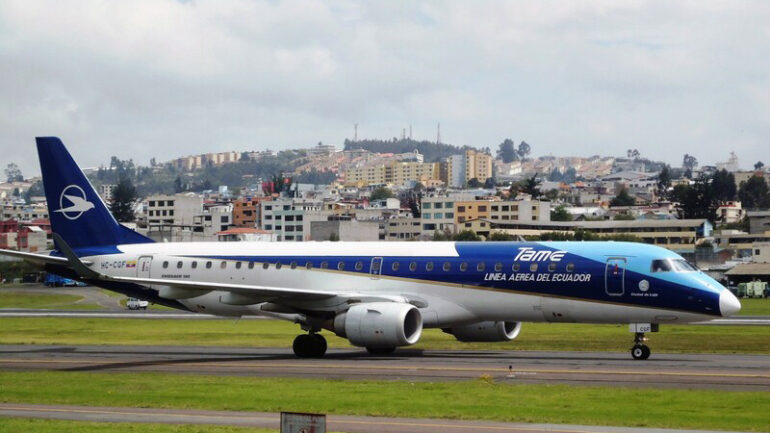





























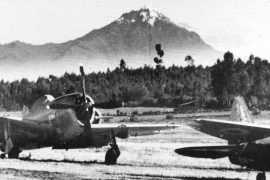
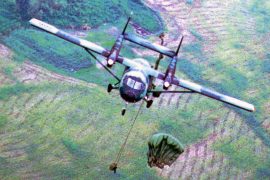
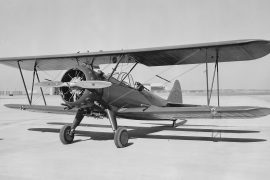
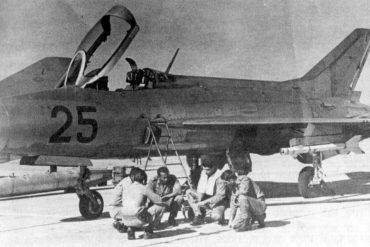
A nice article!
One correction, Boeing 737 HC-BIG crashed on 11 July 1983 (not June)
Also, HC-BHM was at Guayas by June 2016.
Thank you, Andy! We just corrected the article.
Saludos!
Excellent article on a poorly documented operation. Just a couple of additions if I may. TAME also operated Lockheed C-130H HC-BEF/FAE-743 between July 1977 and at least 1981 and C-130H HC-BGO/FAE-812. Also de Havilland (Canada) DHC-5D HC-BFG/FAE-063 from April 1976 and HC-BFH/FAE-064 as well as de Havilland (Canada) DHC-4A HC-BHZ/FAE-249 from March 1981. There was also Douglas DC-10-30 HC-BKO/FAE-46575, ex-Ecuatoriana.
Finally, I have the loss date for L-188 HC-AZJ as 4 September 1989 and that of ERJ-190 HC-CEZ as 16 September 2011.